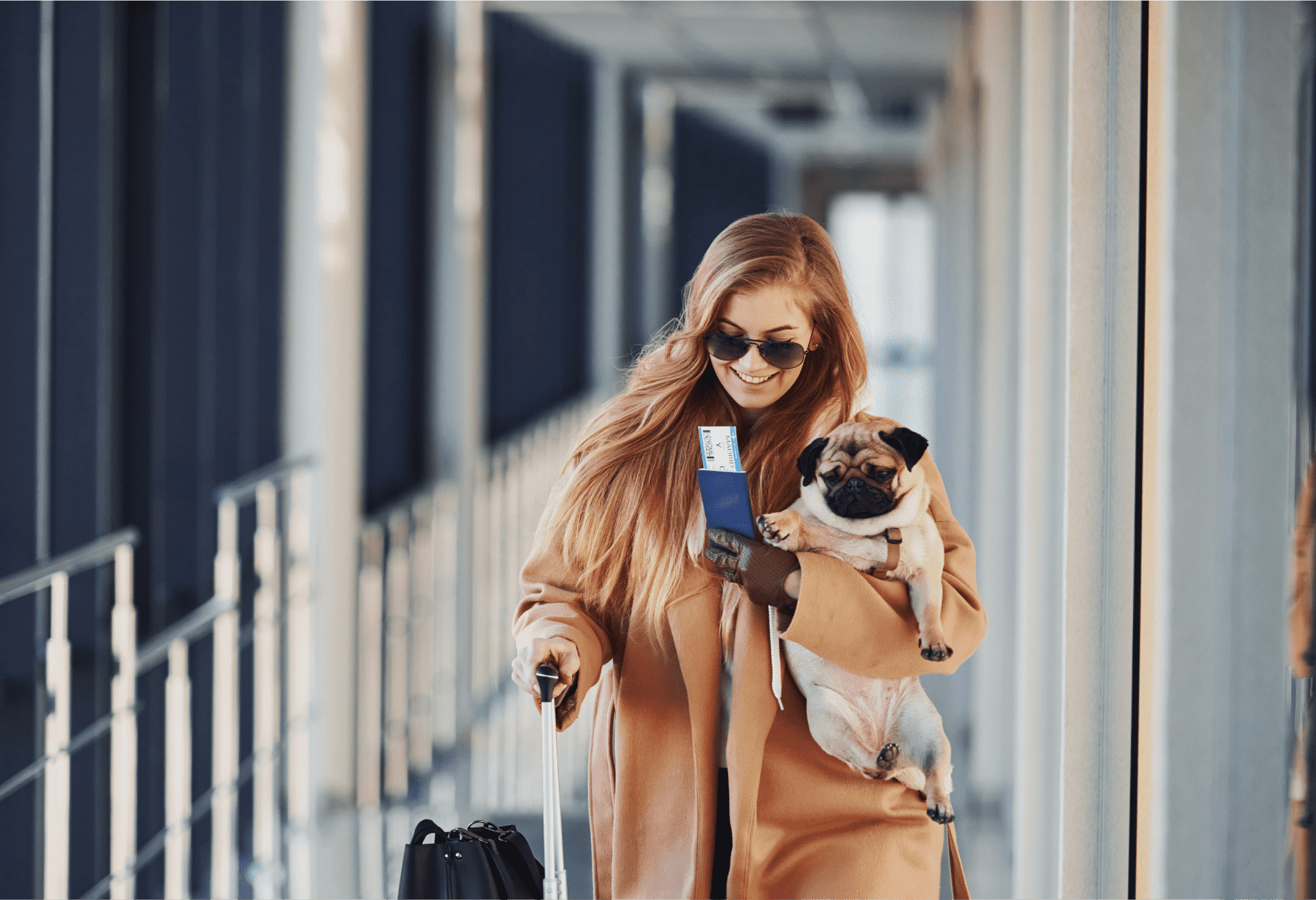Protecting your pets when traveling
Big, small, short, tall – no matter what size your pet, traveling with your furry friend can make your getaway that much more special, but there’s no doubt that traveling can be a nervous experience for both of you. Before you size up cages and prepare your animal’s must-haves for flying, stop and consider the essentials of traveling with pets.
- Does your pet have all its shots?
- Is your pet used to travel? Or, will you need time to train your animal on being crated for a period of time?
- Are you aware of all the rules and regulations surrounding pet travel?
The US Department of Transportation offers comprehensive reports from veterinarians, airlines and the government that detail the specifics of flying with your pet. Make sure you read the list of laws and follow the suggested rules from airlines to ensure your pet arrives in pristine condition.
There are varying rules for domestic and international travel with pets. Your best bet is to contact the airline before you travel to ensure you’re up to date on all the necessary travel requirements before bringing your pet to the airport.
Tips for air travel with a pet
Whether you’re bringing a dog, cat or other beloved pet, these tips will help you create a smooth flying experience for you and your pet.
- Book early. The earlier you can book your travel plans, the more flexibility you’ll have in booking adequate seats and securing your pet’s spot on the plane.
- Talk to your vet. Your pet’s veterinarian can examine your pet before your trip to ensure he or she is fit to travel. Your vet can also issue a health certificate for your pet, which may be necessary depending on the animal regulations in your destination. Your vet can also offer advice on how to best keep your pet calm and relaxed during travel.
- Make sure your pet can be identified. Identification tags for your pet’s collar, as well as their carrier, should clearly present your pet’s name, your name and your contact information. A microchip (an implantable identification device) is also a smart way to ensure your pet can be identified and returned to you in case of emergency.
- Get up-to-date on vaccines. Your veterinarian will be able to advise you on what shots your pet needs before traveling. You should also check your destination’s regulations on vaccines to ensure your pet is in compliance.
- Look for off-peak, direct flights. Traveling outside of the busiest times increases your chances of a less crowded plane, meaning there will be fewer potential stressors for your pet. Direct flights also allow you and your pet to avoid the hassle of layovers, switching planes and longer travel times.
- Get a comfortable carrier. A comfortable carrier that your pet is familiar with can help ease the stress of travel. Your carrier should be just big enough for your pet to be able to stand, lie down and turn around in, and there should be plenty of ventilation holes to ensure your pet gets a steady stream of fresh air. Introduce your pet to the carrier well in advance of the flight so they are comfortable and familiar with the carrier come travel day.
- Avoid sedatives. Unless prescribed by a veterinarian for air travel, tranquilizers should be avoided during the flight. Combined with the change in altitude and air pressure, these medications can interfere with your pet’s breathing and equilibrium.
- Pack your pet’s favorite toys. These can bring your pet a bit of comfort during the flight.
- Check in early. Give yourself a few hours to check in when traveling with a pet. This allows you plenty of time to go over the necessary paperwork and ensure your pet is properly loaded onto the aircraft.
- Contact the airline directly. Before traveling, contact the airline directly to confirm the airline’s travel policies for pets and ensure your pet is booked on the flight.
- Familiarize yourself with the locations of pet relief stations in the airports you’re flying in and out of. Check out our guide to in-terminal airport pet relief stations for more info.
Choosing a destination
Wondering where to go? Check out these dog-friendly destinations in the U.S. including San Diego, Calif. and Key West, Fla.
Search for flights to Key West
Leaving your furry friend at home
Can’t travel with your animal friend this time around? These tips for leaving pets at home while on vacation will ensure your best friend is safe and happy while you’re traveling.
Unlike the Chihuahua who unsuccessfully tried stowing away in her person’s suitcase, your friend will most likely be flying in a carrier. Here are the pet carrier size requirements for some popular airlines:
| Airline | Cabin fee, by segment | Checked fee, one-way | Maximum kennel size (cabin) | Maximum kennel size (checked) |
| Alaska Airlines |
$100 |
$100 |
17″ L x 12″ W x 9.5″ H | 40″ L x 27″ W x 30″ H |
| Allegiant Air |
$100 |
n/a |
19″ L x 16″ W x 9″ H | n/a |
| American Airlines |
$125 |
$200 |
19″ L x 13″ W x 9″ H | 40” L x 27” W x 30” H |
| Delta Air Lines |
$125 |
$200 |
18″ L x 10.5″ H x 11″ W | 48″ L x 32″ W x 35″ H |
| Frontier Airlines |
$75 |
n/a |
24″ L x 10″ H x 16″ W | Checked pets not allowed |
| JetBlue Airways |
$100 |
n/a |
17″ L x 12.5″ W x 8.5″ H | Checked pets not allowed |
| Southwest Airlines |
$95 |
n/a |
18.5″ L x 13.5″ W x 8.5″ H | Checked pets not allowed |
| Spirit Airlines |
$110 |
n/a |
18″ L x 14″ W x 9″ H | Checked pets not allowed |
| United Airlines |
$125 |
17.5″ L x 12″ W x 7.5″ H | 48″ L x 32″ W x 35″ H | |
| US Airways |
$125 |
n/a |
19″ L x 13″ W x 9″ H | Checked pets not allowed |
| Virgin America |
$100 |
n/a |
18″ L x 15″ W x 8″ H | Checked pets not allowed |
(Main image: dryfish)




